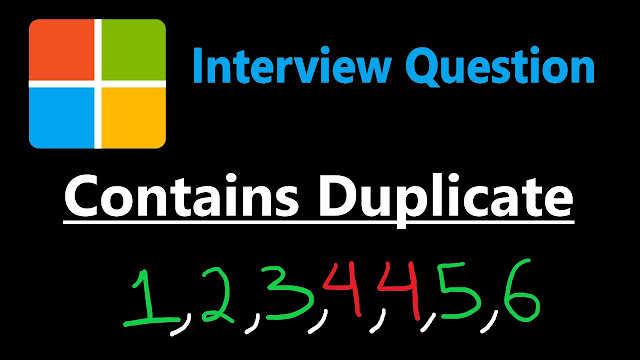Given an integer array nums, return true if any value appears at least twice in the array, and return false if every element is distinct.
Example 1:
Input: nums = [1,2,3,1]
Output: true
Example 2:
Input: nums = [1,2,3,4]
Output: false
Example 3:
Input: nums = [1,1,1,3,3,4,3,2,4,2]
Output: true
Constraints:
1 <= nums.length <= 105-109 <= nums[i] <= 109
class Solution {
public:
bool containsDuplicate(vector<int>& nums) {
unordered_set<int> uos;
uos.insert(nums[0]);
for (int i = 1; i < nums.size(); i++) {
if (uos.find(nums[i]) != uos.end()) {
return true;
}
uos.insert(nums[i]);
}
return false;
}
};unordered_map will be used to store key-value pairs, here the duplicate count is not asked.
Contains Duplicate II
Given an integer array nums and an integer k, return true if there are two distinct indices i and j in the array such that nums[i] == nums[j] and abs(i - j) <= k.
Example 1:
Input: nums = [1,2,3,1], k = 3 Output: true
Example 2:
Input: nums = [1,0,1,1], k = 1 Output: true
Example 3:
Input: nums = [1,2,3,1,2,3], k = 2 Output: false
Constraints:
1 <= nums.length <= 105-109 <= nums[i] <= 1090 <= k <= 105
class Solution { public: bool containsNearbyDuplicate(vector<int>& nums, int k) { unordered_map<int,int> nmap; for (int i = 0; i <nums.size();i++) { if (nmap.count(nums[i]) == 0) nmap[nums[i]] = i; else if (i - nmap[nums[i]] <=k) { return true; } else { nmap[nums[i]] = i; } } return false; } };
If the input given is [1,2,3,1, 2, 3] and k is 2, the map will contain the elements in this order after each iteration.
Output
After 0 iteration
1 0
After 1 iteration
2 1
1 0
After 2 iteration
3 2
2 1
1 0
After 3 iteration
3 2
2 1
1 3
After 4 iteration
3 2
2 4
1 3
After 5 iteration
3 5
2 4
1 3
If we want to update the element in the same key, the old value will be destroyed. It will store the new value.

Comments
Post a Comment